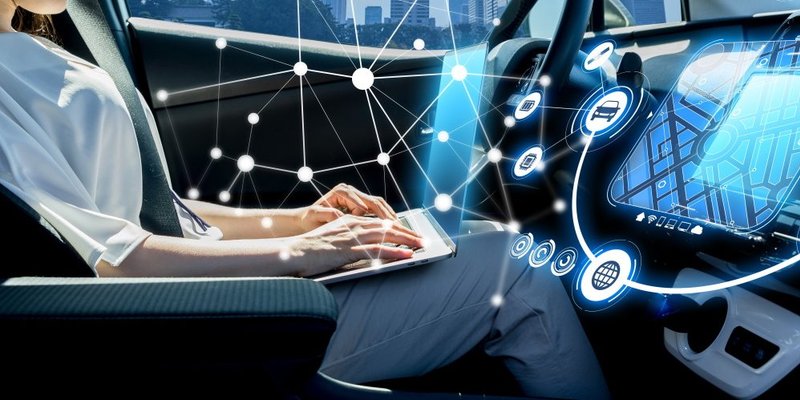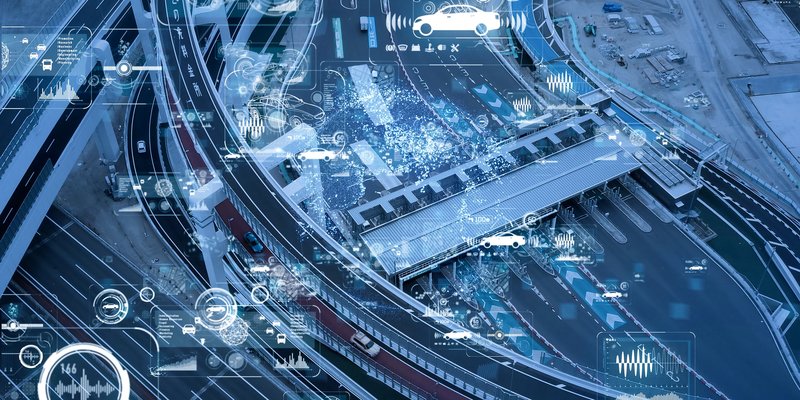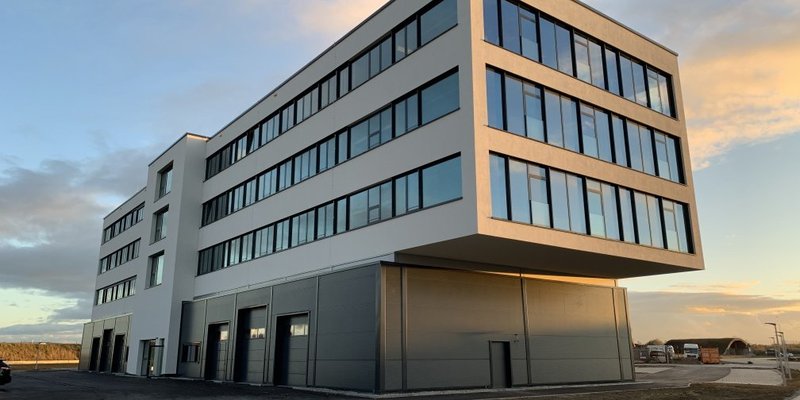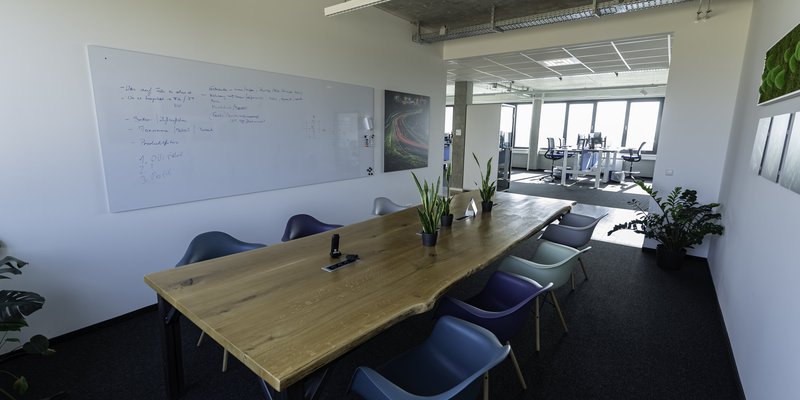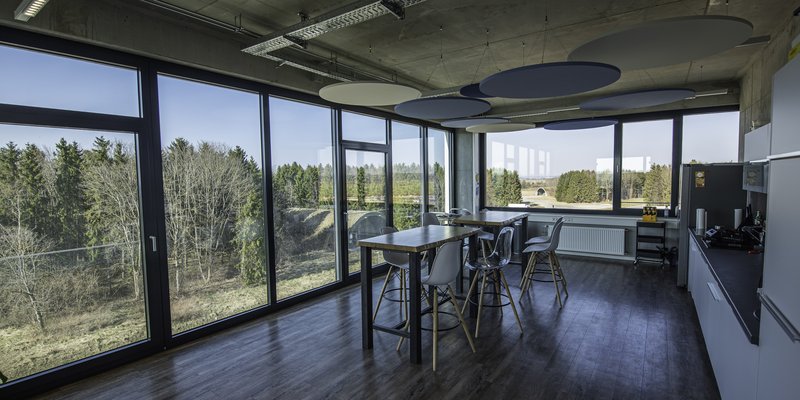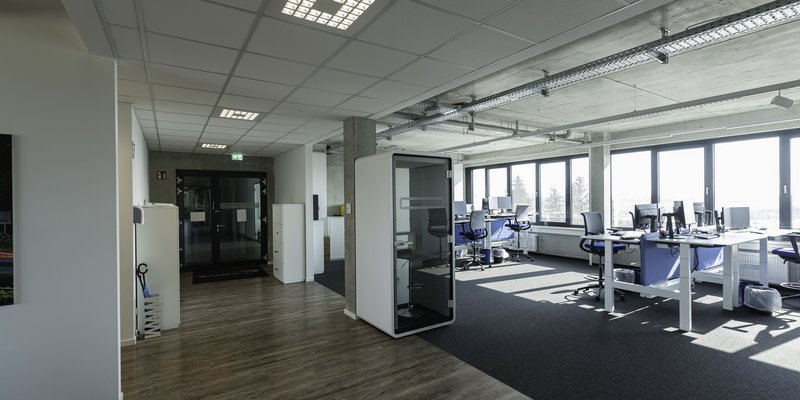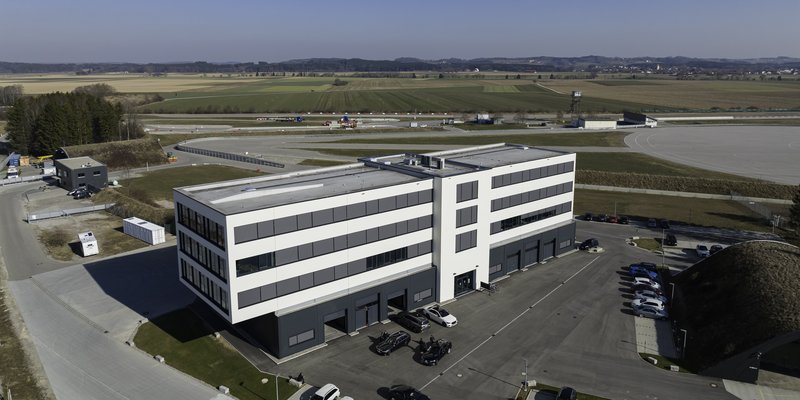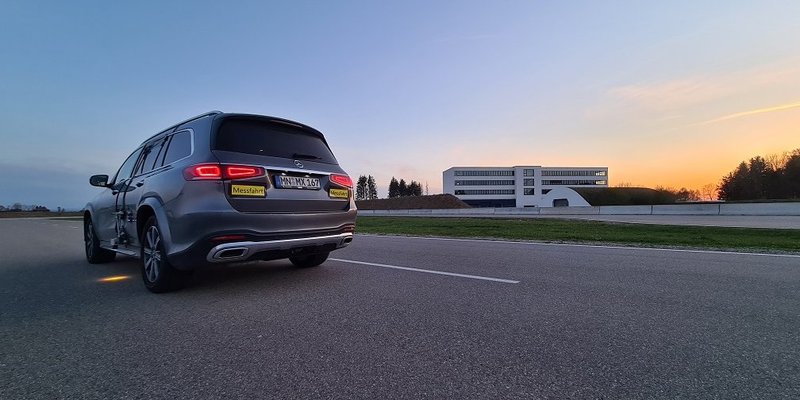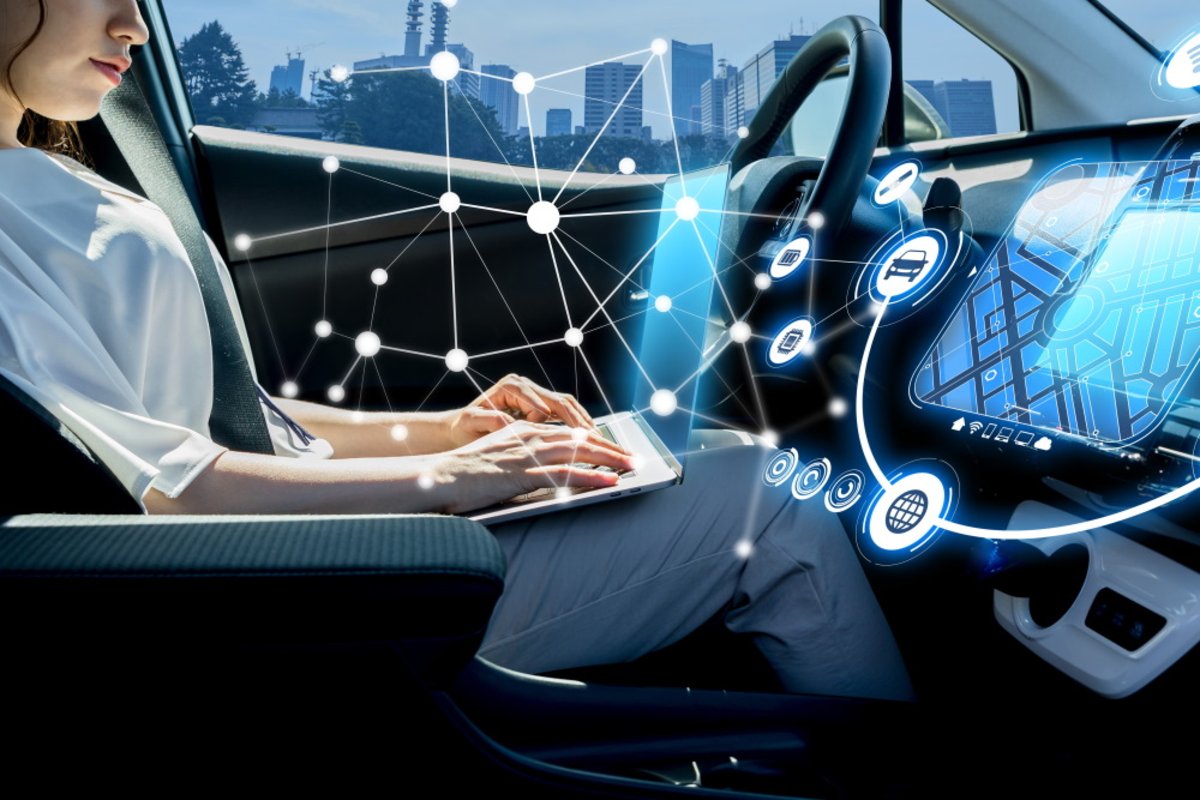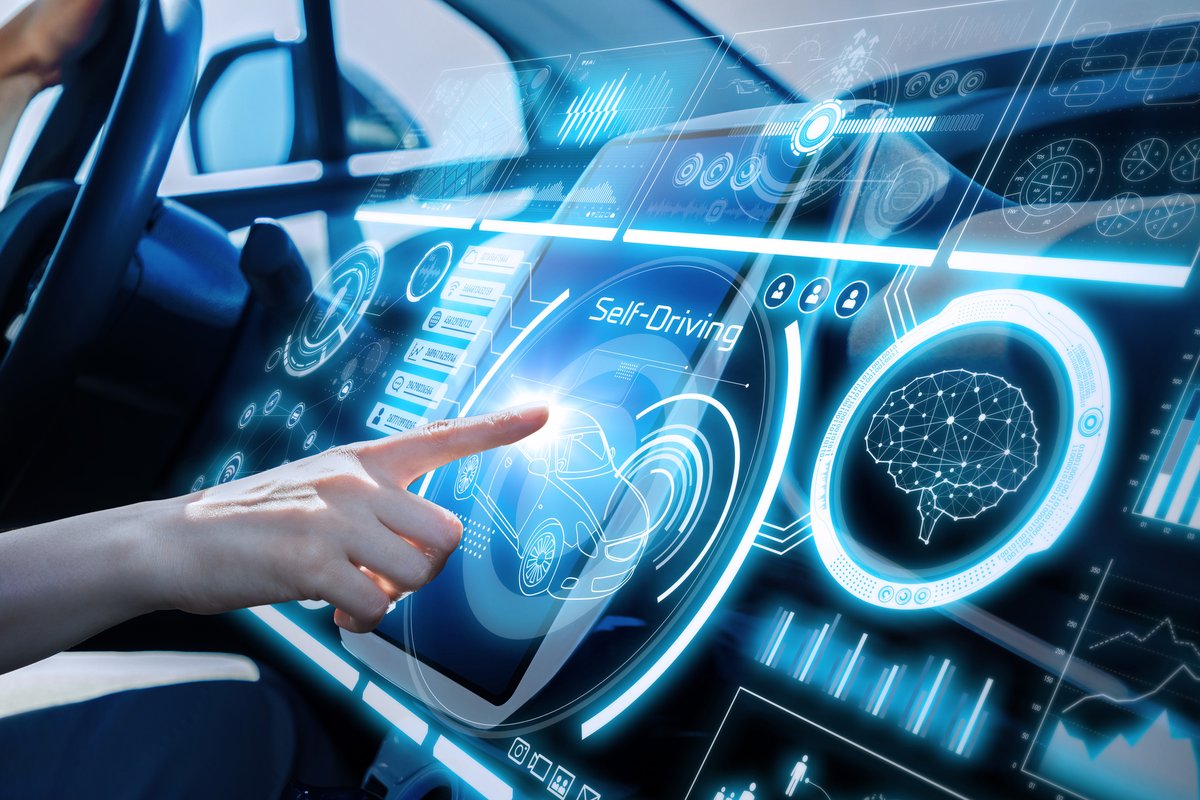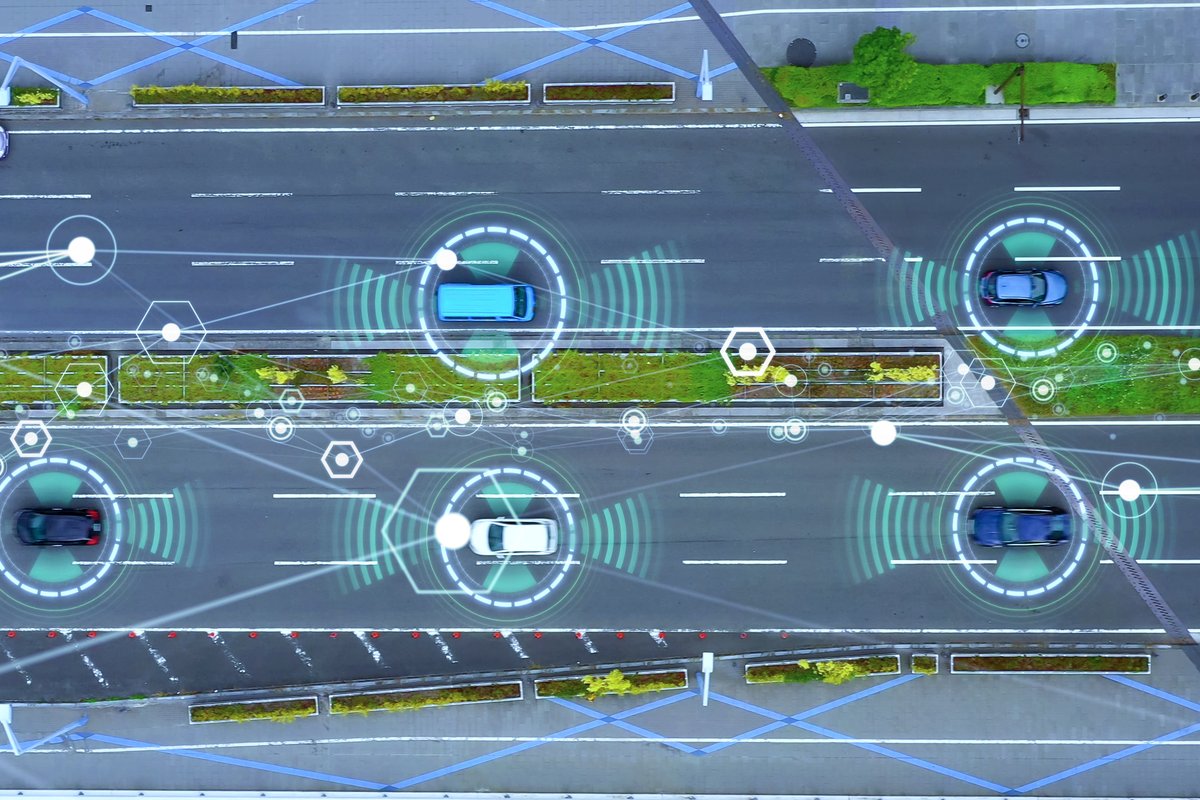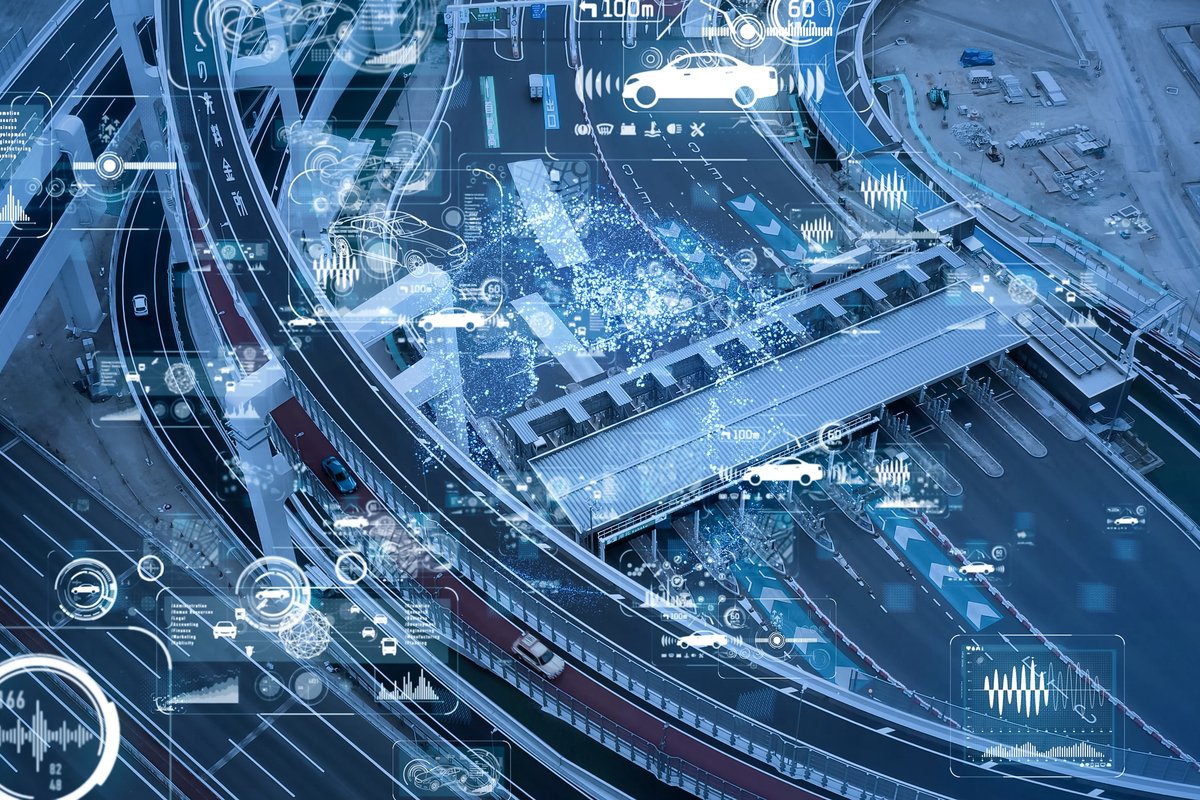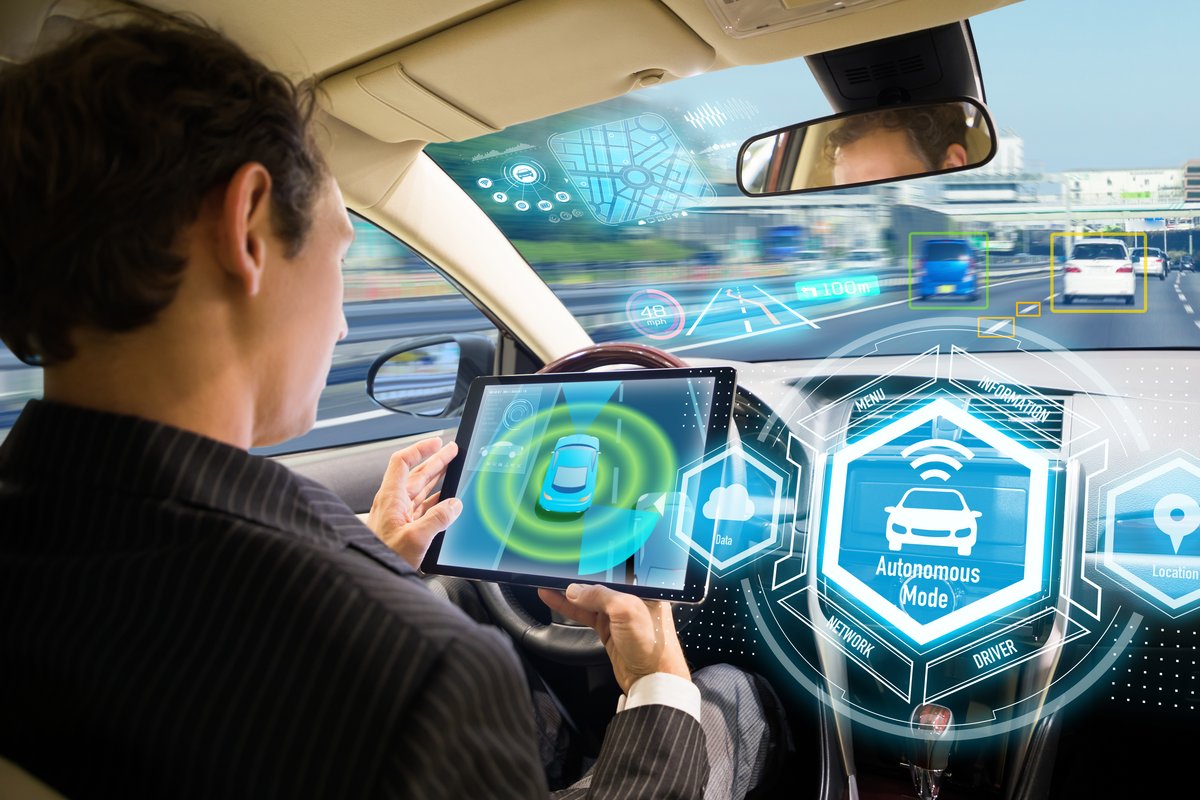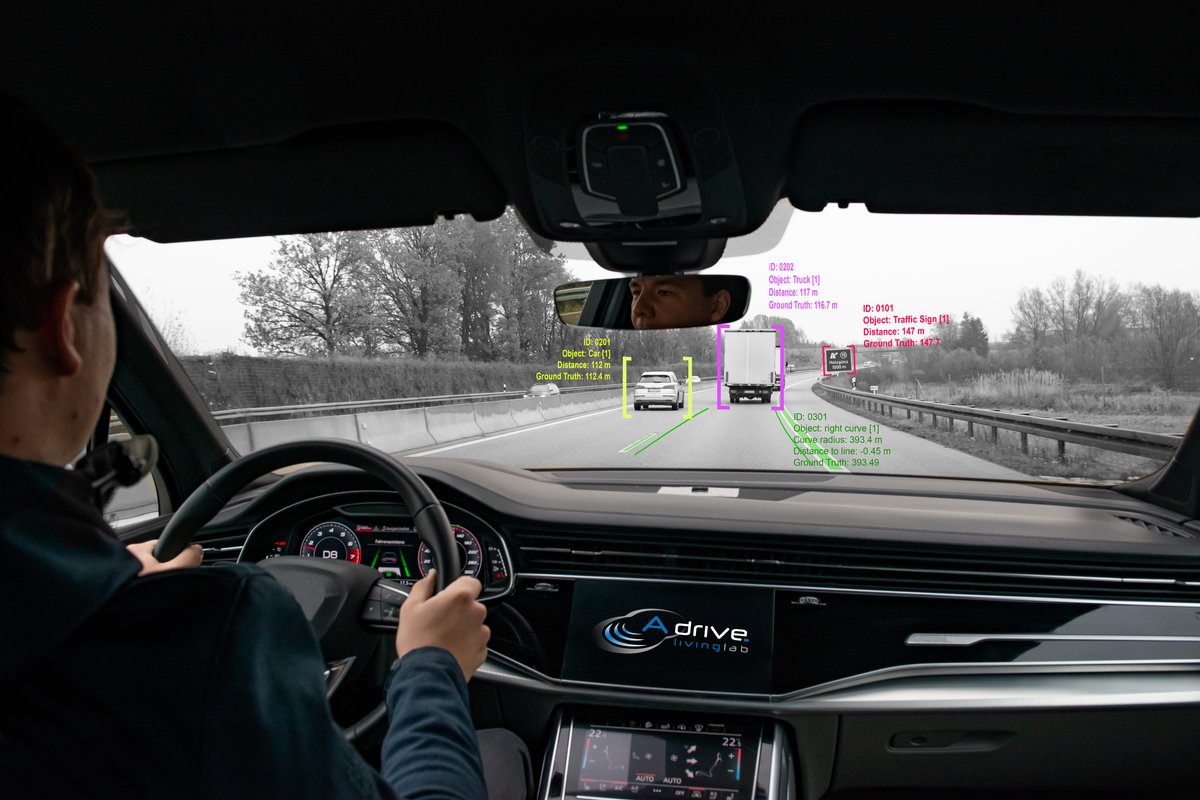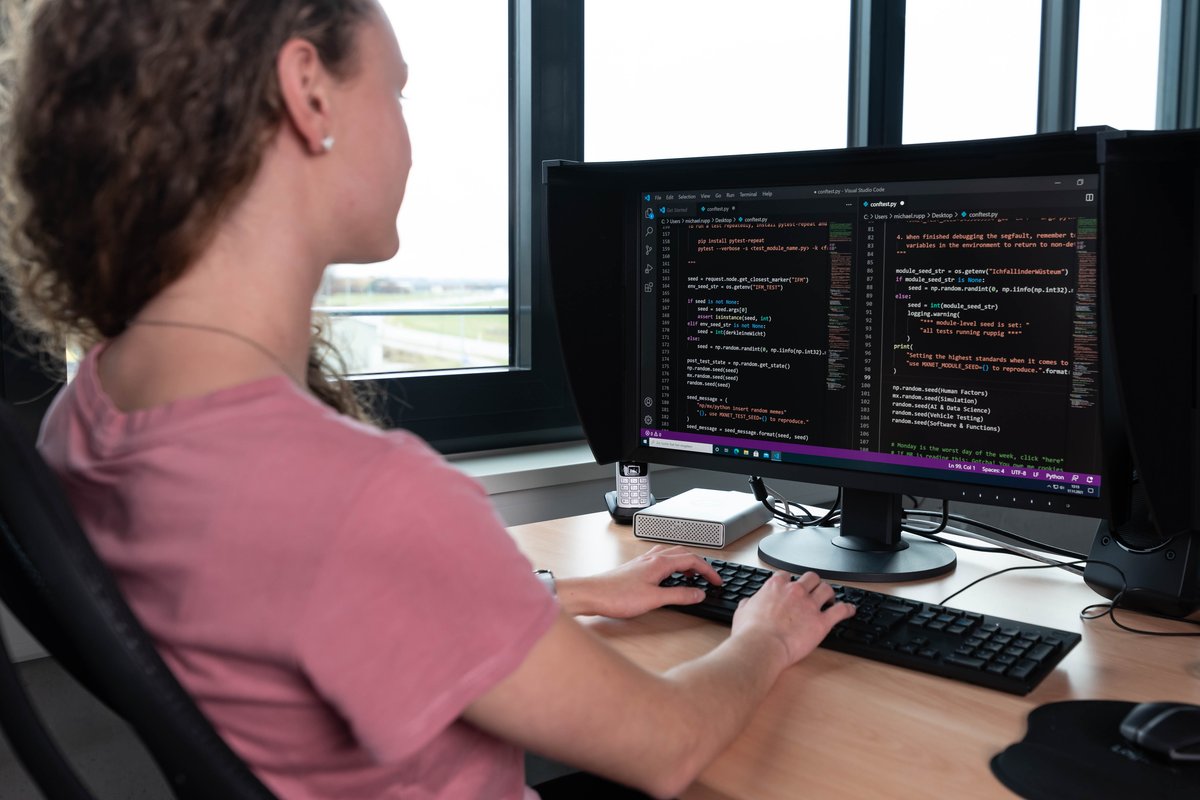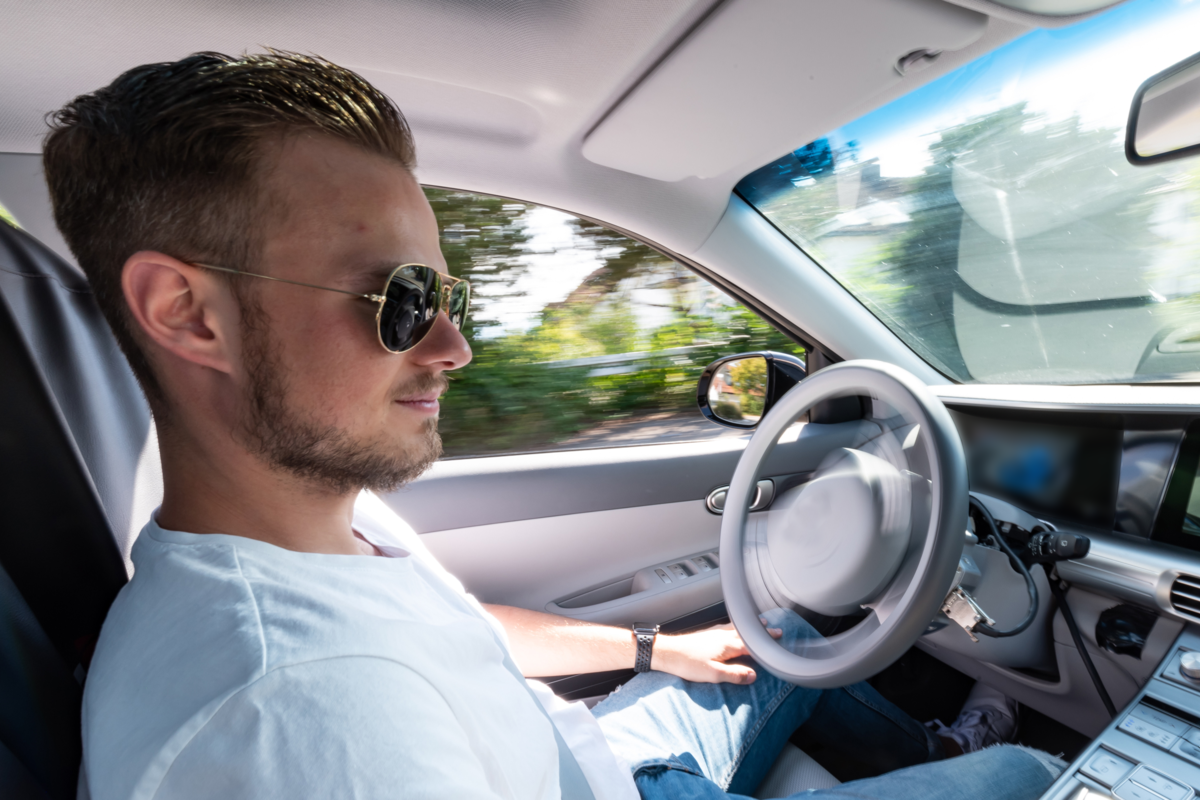Institute for Driver Assistance and Connected Mobility (IFM)
Assisted and automated driving, electric mobility and smart networking are megatrends in the automotive industry that herald major upheaval. Sponsored by the Free State of Bavaria, the recently formed IFM pools research into the fields of Advanced Driver Assistance Systems and Connected Mobility. The Institute’s activities focus on:
- Developing methods and specifications for new driver assistance systems
- Holistic simulation
- Checking and validating safety and reliability
- Connected mobility
The IFM has immediate access to an adjacent test site and can thus activate numerous projects advancing driver assistance, automated driving and connected mobility. The Institute cooperates with other application-focused partners (e.g. Munich University of Applied Sciences), but also institutions oriented more towards basic research (e.g. Technical University of Munich).
At the same time, we are keen to expand collaboration efforts with industrial companies, who in such an innovative field of work greatly require research and development and need both well-trained young staff and research capacity and expertise.
Research and development topics
- Automated Driving Functions
- Sensor Technologies
- MIL/SIL Simulation Sensor Models
- HIL-Simulation RT-Systems
- Rig Testing Methods
- Road Testing Methods
- Functional Safety Cybersecurity
- Connected IT-Systems
- Human Factors User Experience
- Testing/Validation Methods
- Measurement Data Analytics
- AI / Deep Learning Methods
IFM – facts and figures
- Over 70 research staff in the fields of automated driving functions, functional safety, cybersecurity, sensor technologies and networked IT systems
- Location: Junkersstr. 1A, 87734 Benningen, Germany
- www.hs-kempten.de/ifm
Contact
Professor Bernhard Schick
Head
Tel. +49-8331-9893-099
bernhard.schick(at)hs-kempten.de
Professor Dr Rolf Jung
Head
Tel. +49 (0)8331 9893 100
rolf.jung(at)hs-kempten.de
Location
Junkersstrasse 1A, 87734 Benningen, Germany
Great location
In late 2020, the Institute moved into brand new premises right nextdoor to the FAKT Motion test site and equipped with vehicle workshops, laboratories and offices offering ample space for the test stations and advanced Vehicle Driving Simulator in the Adrive Living Lab.
The new site is highly advantageous for the Institute, thanks to its close proximity to the test site and easy access to its facilities. With Allgäu Airport and other companies in the automotive sector also nearby, the IFM sits at the heart of a flourishing economic hub in the lower Allgäu region in southern Germany.
In the research area of driver assistance, the IFM team focuses particularly on the following topics:
On the one hand, we are working on further developments in the field of autonomous driving with the aid of virtualising tests. This allows not only the tests themselves, but also the environment, driver and vehicle components to be abstracted. In addition, virtualising tests is not only more cost-effective, but also offers higher test efficiency due to intelligent evaluation, validation and validation methods.
Special test-person studiesalso place human beings at the forefront of research.
The increasing automation of vehicles makes validation and safeguarding measures together with functional safety and cyber security more and more important. By further developing systems in this area, we endeavour to continue to ensure the safety of road users – especially in light of the reduced possibilities for intervention by the driver.
In developing driver assistance systems and automated driving, sensors and algorithms for recognising environmentplay a particularly important role. They have to perform intelligent driving manoeuvres and provide a safe assessment of the current traffic situation – especially in urban areas with complex traffic situations and variables.
End-to-end methods and technologies for developing ADAS/HAF/A
Conventional driving functions, e.g. powertrain and vehicle dynamics, are only given the go-ahead after they have been rigorously tested in realistic application scenarios. However, the strategy used so far for classic vehicle tests is insufficient for validating automated driving functions such as driver assistance, highly automated driving functions or autonomous driving, with the required scope far exceeding any proportionate sense of economic viability. One way of significantly reducing the outlay involved is to virtualise the tests, which involves abstracting not only the tests themselves, but also the three system-descriptive driving components. As the degree of automation increases, the human factor fades into the background as it’s gradually replaced by sensors at the interface between the environment and driver.
End-to-end development of driver assistance systems – virtual to real
The test procedures required for driver assistance systems and automated driving are increasingly becoming more elaborate than the development work itself. Solutions to this conundrum can be found in virtualisation, frontloading using smart evaluation, validation and safety assurance methods together with more efficient testing. Automotive manufacturers are challenged to develop driver assistance systems and automated driving functions (ADAS/AD), even more so to stand out from the crowd, since their market-specific properties and positioning were hardly considered during the functional development process in the past.
Human-machine interaction
As part of its research into the human aspect, the Adrive Living Lab at Kempten University of Applied Sciences has conducted a series of trials including both psychological questionnaires and measurements of the vehicle, environment and the test persons themselves. In addition, the Adrive Living Lab has devised a simulator concept and built this into a function demonstrator for conducting research into human behaviour in complex and critical situations.
Functional safety and cyber security
Measures to validate and assure functional safety and cyber security need to be monitored and refined, as higher levels of automation leave drivers decreasing scope for intervention, thus focusing attention on errors at the human-machine interface. For completely autonomous operations, the safeguards need mapping for all scenarios, the number of permutations being so vast that it needs reducing somehow without compromising the safety of road users. Besides the possibility of specification shortcomings, spontaneous component failure and software errors, driver assistance systems can also behave erroneously even when sensors and controls are used properly, for instance causing “ghost images”.
Sensors and algorithms for detecting the environment
One of the fundamental requirements for developing driver assistance systems and highly automated driving is the ability to reliably and robustly identify the environment. Performing intelligent and appropriate driving manoeuvres and entire scenarios in all settings – particularly in urban areas – calls for evaluating the current traffic situation precisely and dependably. It’s important to ensure the recognition of complex situations with multiple variables, including the road and highway infrastructure such as traffic lights and road signs, but also roadworks, the edges of carriageways, moving or stationary vehicles, pedestrians, cyclists and animals – and both their predictable and unexpected actions. This requires series-manufacturing volumes of all kinds of state-of-the-art, high-precision environmental sensors for reference purposes.
In the research field of connected mobility, everything revolves around the following topics:
Control components of the driver assistance systems actively intervene in the vehicle's driving dynamics and thus place the highest demands on the functional safety and reliability of the individual systems and their interactions in the system network. A particular challenge therefore lies in integrating the networked driver assistance functions into the overall constellation of the vehicle.
In addition, satellite positioning & navigation and Car2X communicationfall into this area. Their cooperative capabilities with regard to traffic flow management are supportive and make a valuable addition to autonomous vehicles’ ability.
The ICT infrastructurebetween vehicles, charging infrastructure and route planningdeveloped by the university also provides a basis for user-friendly and economical operation of electric vehicles. To this end, we are continuously expanding the existing database and adding interfaces. The ultimate goal is to expand the database into a platform-independent solution..
Virtual test of embedded steering and control devices
Control components in advanced driver assistance systems actively intervene in a vehicle’s driving dynamics and set stringent demands on the safe functioning and reliability of individual systems and their interplay within the integrated network. They constantly interact with control units and other regulatory systems. This requires immense development efforts, particularly when it comes to “integrating connected driver assistance functions into the entire vehicle system”.
Location, map data, Car2X communication
Satellite-assisted location and navigation combined with graphic information systems (GIS) based on digital maps are now well-established “state-of-the-art” technologies. In future, Car2X communication will equip vehicles with the essential collaborative capabilities required to automate and optimise traffic flow control, for example at crossroads with traffic lights and on motorways. Truly autonomous driving can only be fully realised by adding collaborative capabilities.
Trials, evidence and field tests
The ICT infrastructure between vehicles, charging infrastructure, energy supply and route planning all developed in recent years at the university of applied sciences form the basis for a user-friendly, reliable and economically feasible means of operating vehicles – paving the way for connected mobility. We aim to achieve complete interoperability between systems, enabling bi-directional data exchange and creating a robust framework and acceptable economic conditions. To this end, we are working on expanding the existing database and enhancing the interfaces. We aim to make data presentation scalable and to expand the database into a platform-independent solution that can process masses of operational data, which in turn form the basis for researching functionality and reliability.
Explore-to-Innovate | Research and technology up close and live
Technology transfer for the benefit of people, the economy and society
The future of mobility is becoming increasingly automated and digitalised. The automotive industry has to hold its own in the face of technological change and international innovation competition – as quickly and efficiently as possible. Experience living research and technology in this field!
The new “Explore-to-Innovate” forum – consisting of two days: Science Talk, Evening Rollout and Track Day – represents a unique combination of specialist presentations, a technology exhibition and live demos in the lab and on test tracks. Together with our partners, we are creating a community to get the latest research results off the ground – technology transfer for the benefit of people, business and society.
The Institute for Driver Assistance and Connected Mobility gathers contributory research specialisms together under the motto: interdisciplinary research in close collaboration with the automotive industry.
Together with its technology partners, the Institute for Driver Assistance and Connected Mobility at Kempten University of Applied Sciences invites you to the IFM in Benningen (Allgäu Airport Innovation Park) on June 19 and 20, 2024.
The numerous attendees are offered exciting presentations, insights into research, and an entertaining evening – a day full of experiences and innovations.
If you missed the event, please have a look at our Youtube channel: Explore-to-Innovate 2023 | English
Participating professors
Jung, Rolf, Prof. Dr.
Göhner, Ulrich, Prof. Dr.
Schick, Bernhard, Prof.
Poguntke, Tim, Prof. Dr.
Stiegelmeyr, Andreas, Prof. Dr.
Zeh, Thomas, Prof. Dr.
